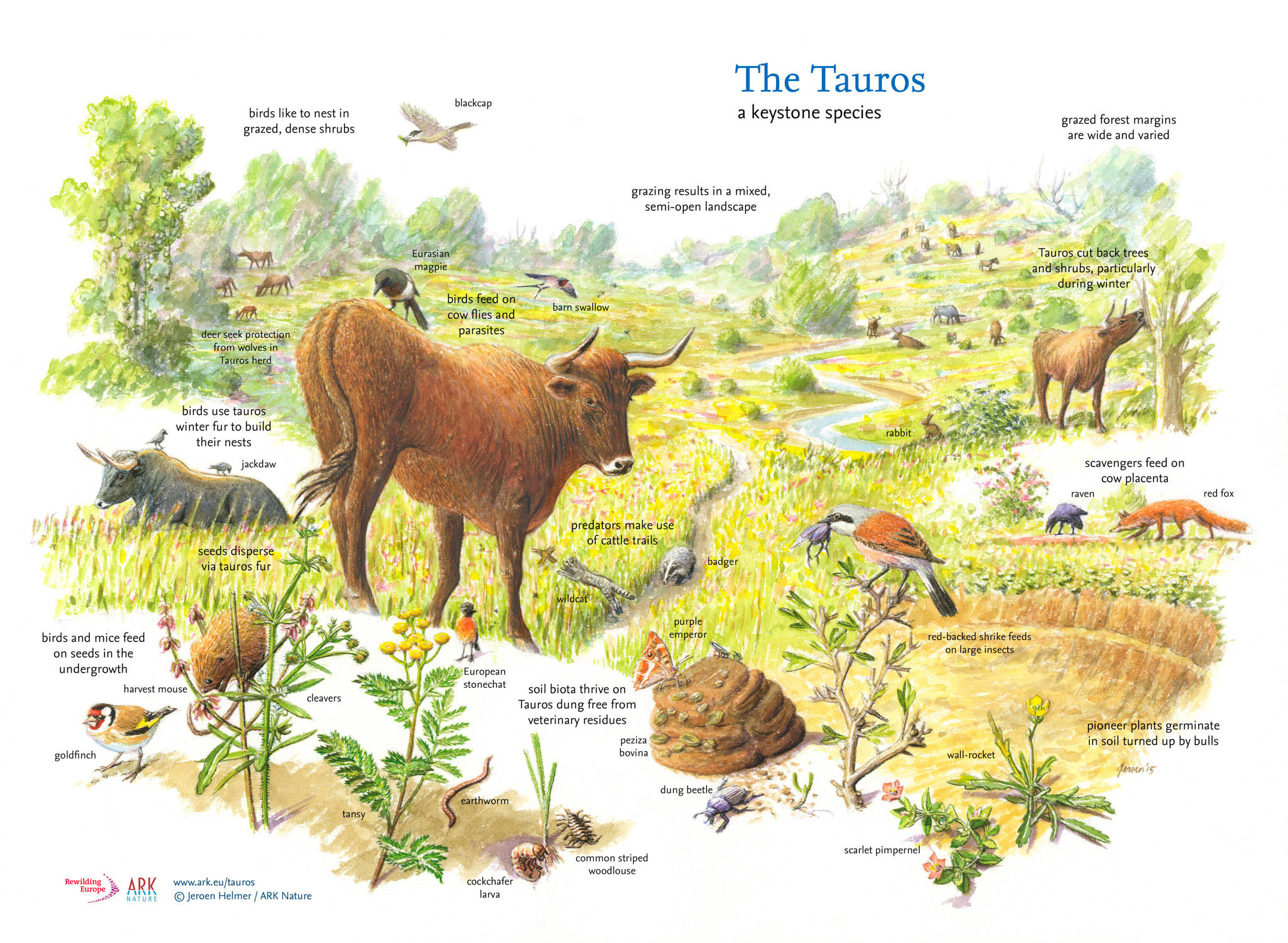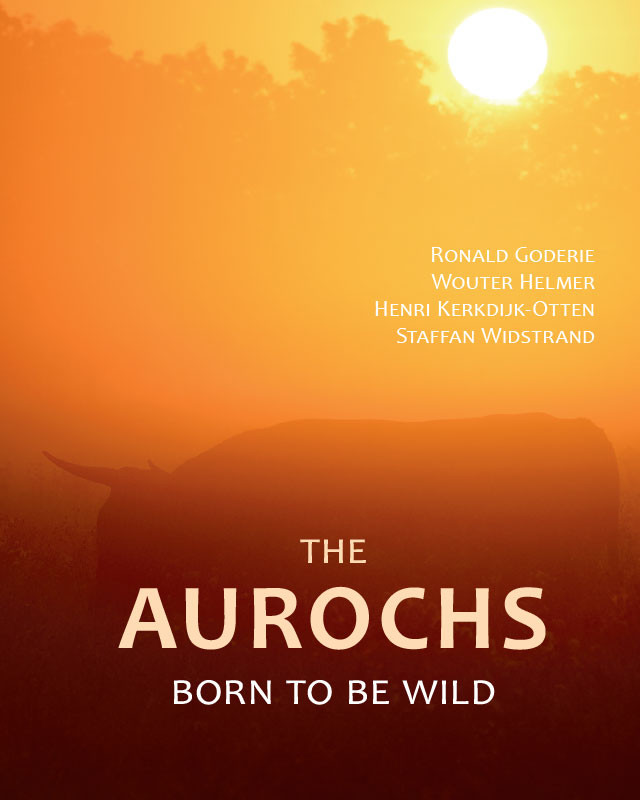The final goal of the programme, to be met in some 20 years, is the presence of the Tauros as a self-sufficient wild bovine grazer in herds of at least 150 animals each in several rewilding landscapes in Europe.
The Aurochs revival
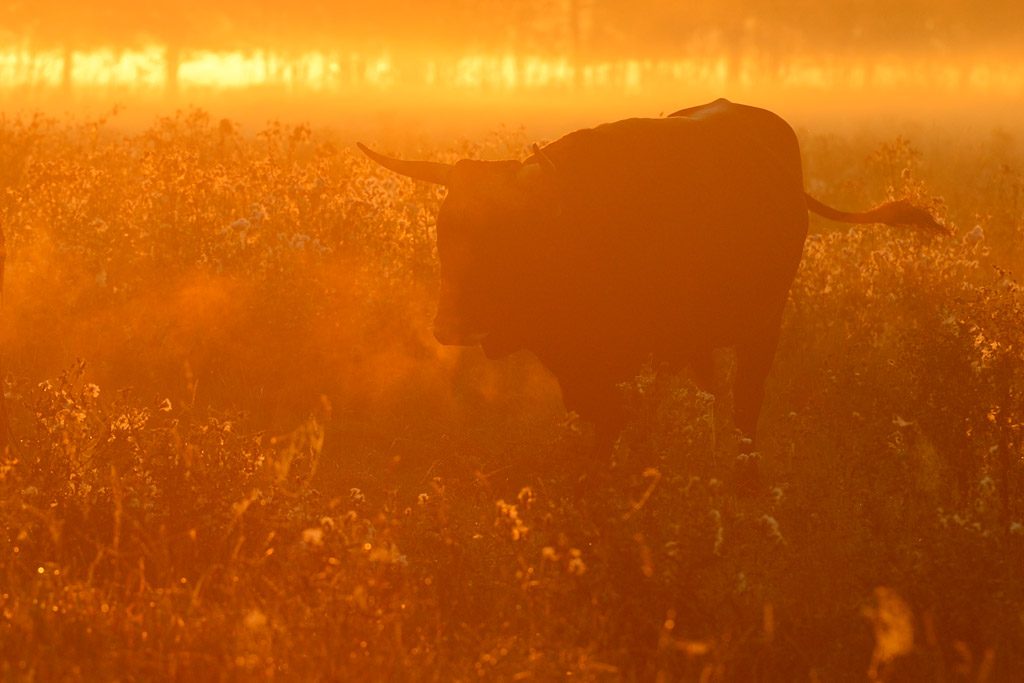
Extinct, but still around
The aurochs is the ancestor of all cattle and thereby the most important animal in the history of mankind. The keystone species for many European ecosystems was hunted to its extinction in 1627. However, its DNA is still alive and distributed among a number of the ancient original cattle breeds. “The Tauros Programme” aims to bring back the aurochs as a functional wild animal, by back-breeding the closest relatives of the original aurochs.
Grazing the landscapes of Europe, the aurochs – Europe’s original wild bovine species – once played a vital role in maintaining biodiversity. Today, nearly four centuries after the animal’s extinction, pioneering efforts by Rewilding Europe and Grazelands Rewilding are seeing this beneficial herbivore brought back to life.
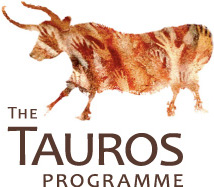
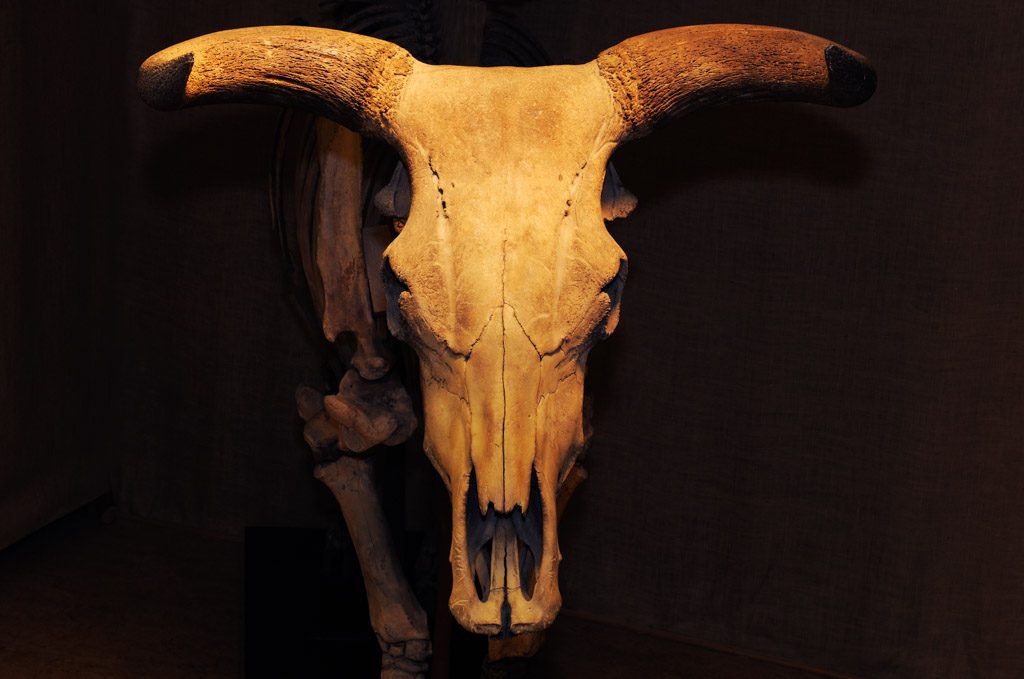
Back to the future
As the ancestor of all domesticated cattle, it is hard to think of a more important animal in the history of mankind than the aurochs. Once widespread across Europe, it was a keystone species within many of the continent’s ecosystems. But by 1627 this impressive animal had been hunted to extinction across its entire range. The aurochs may be long gone, yet all is not lost.
Today strands of its DNA remain alive, distributed among a number of ancient cattle breeds that still exist across Europe. Rewilding Europe, together with the then, Dutch Taurus Foundation, now Grazelands Rewilding in 2013 embarked on a programme to bring the aurochs back to life.
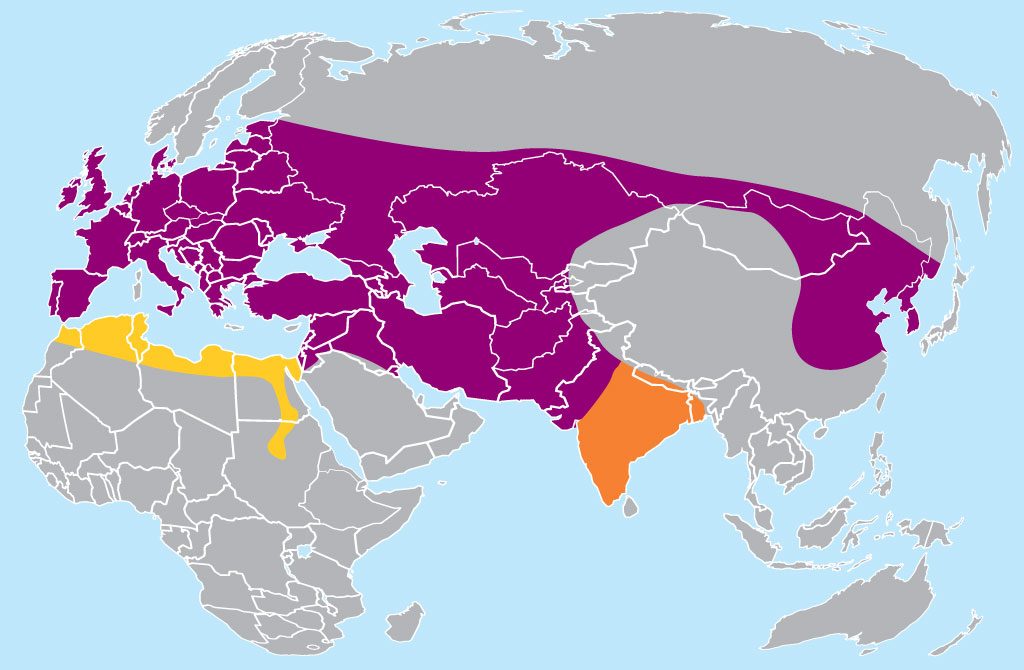
All across Europe
The aurochs was one of Europe’s most important mammal species. In the Greek myth about the founding of Europe, Zeus in the form of an aurochs bull seduces and kidnaps the beautiful princess Europa. Since then the aurochs and its descendants – our present day cattle breeds – have played an important role in the making of Europe. Zeus the bull and Europa can today be found on the Greek two Euro coin. The building of the Council of Europe in Brussels has chosen the same symbol: a statue of Europa and the bull.
The aurochs once roved virtually all across Europe: from the southern part of Scandinavia to North Africa, from the UK all the way into Central Asia. The ecological influence of all these grazing animals on the vegetation was significant. After the last Ice age, however, things started to change because of modern man.
The distribution of Eurasian aurochs (), Indian aurochs (
) and North African aurochs (
).
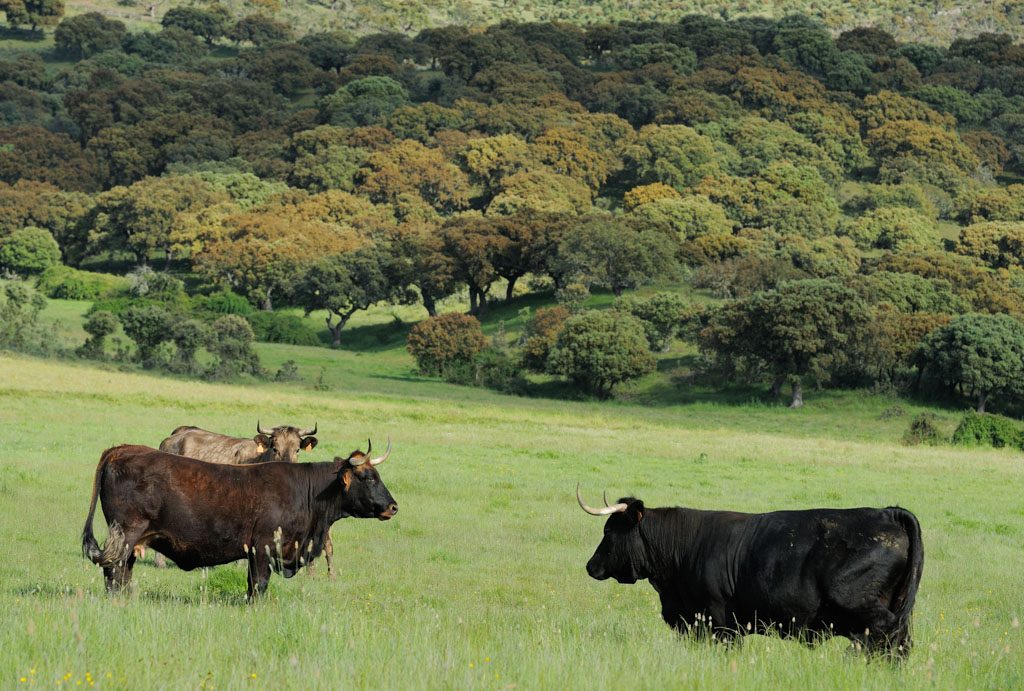
Bovine-led biodiversity
For millions of years, European land has been grazed – by wild herbivores, and, far more recently, by domestic cattle. This grazing has kept parts of the land free from forest, providing open habitats that support a wide range of plants and animals.
But today a decline in animal husbandry across Europe means these habitats, and their biodiversity, are in danger of disappearing. This is where the aurochs, or its descendant – the so-called “Tauros” – comes in. Through selective breeding, Rewilding Europe and its partners want Tauros to occupy the niche the aurochs once filled, keeping Europe’s rich mosaic of open landscapes flourishing through natural grazing.
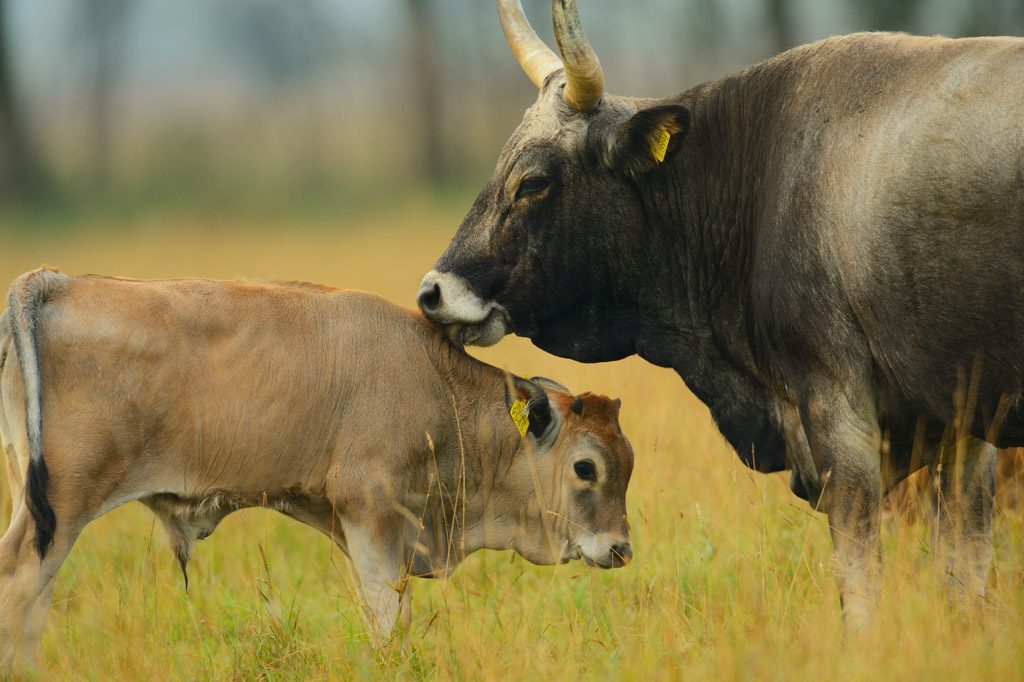
Selective science
The aim of the Tauros Programme is to create a modern-day equivalent of a long-dead animal. The principal technique is “back-breeding”: by combining cattle breeds with desired characteristics, a bovine can be created with physical attributes, behaviour and genetics that closely match those of Europe’s original wild aurochs.
Today, many old European cattle breeds still retain a genetic similarity to the aurochs. Following the selection of six or seven such breeds from an original list of over 30, the first animals were purchased and transported to the Netherlands for breeding. Apart from natural breeding in social (family) groups, artificial insemination techniques are also used in the initial phase to accelerate the breeding process and enable highly specific genetic combinations.
The breeding programme is founded on a broad, multidisciplinary scientific base, including geneticists, ecologists, molecular biologists, archaeologists, archaeo-zoologists, historians, isotope experts, cattle experts and European cattle breeding organizations.
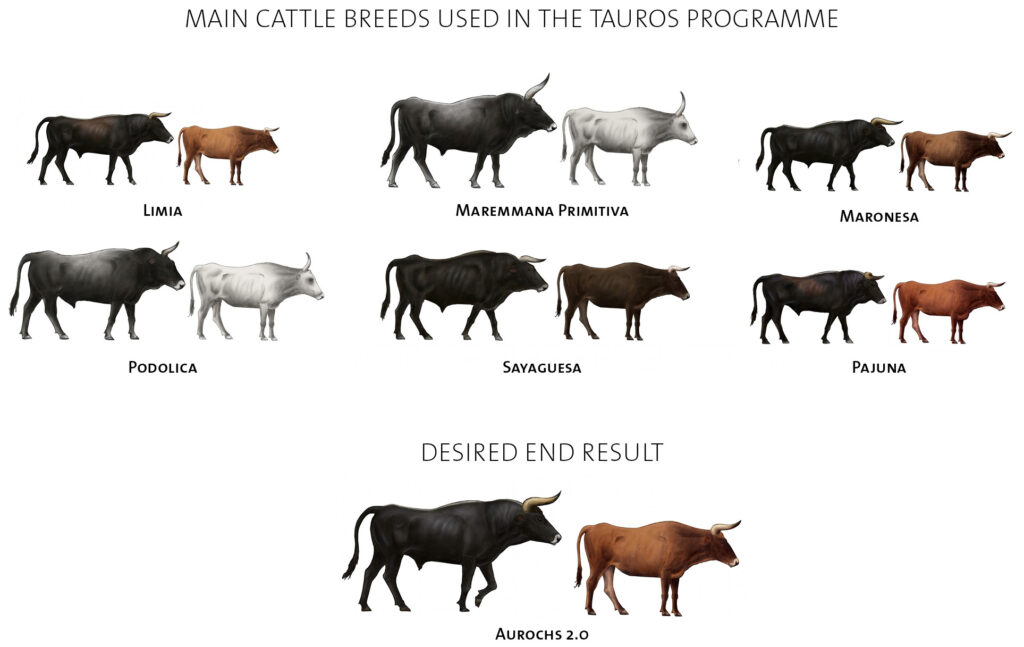
Drawing: Daniel Foidl
Iberian and Podolian breeds
A genetic study published in 2016, ranking 34 primitive cattle breeds by their closeness to the extinct aurochs, provides additional scientific backing to the Tauros Programme that aims to breed a suitable replacement for this lost species.
The researchers calculated the genetic distance between the analyzed breeds in comparison to the complete genome of the first-ever sequenced aurochs (using a 6,700-year-old fossil). It was found that four of the breeds that play a major role in the Tauros Programme are in the top 10 of the list and six of our breeds are in the top 15.
The leading practice in the Tauros breeding programme so far – combining Iberian and Podolian breeds (Podolia is a historic region in Eastern Europe, located in the west-central and south-western parts of Ukraine and in northeastern Moldova) with aurochs-like physical traits – is thus being confirmed as the best approach by the combined results of the study. However, at this time only the genome of one specimen of the aurochs has been fully sequenced (autosomal DNA), so new additional information could lead to adjustments of this conclusion. It is therefore that the breeding programme still uses a rather wide variety of crossings (between the selected breeds).
“The main idea of the Tauros Programme is to back-breed these animals into becoming a fully self-sufficient, wild-living bovine species, that genetically comes as close as ever possible to the original aurochs.”

Ronald Goderie
Director of Grazelands Rewilding
Phases of the Tauros programme
Future research
The research also identified a number of breeds that are genetically close to the aurochs but are not yet used in the Tauros Programme. The reason for this was that based on phenotypical features (the way the animals look) better breeds were available. Future studies will determine if some of the newly identified breeds should be included in the programme.
Future research also needs to dive deeper into the genetic features of the aurochs, to be able to identify specific genes for domestication, and thus getting more of a ‘grip’ on genes that could be crucial for going into the opposite direction – the rewilding of the species. More fully sequenced specimens of the aurochs that cover a substantial part of the European continent are needed, to be able to get an idea of the genetic diversity within aurochs.
The scientific study was done by members and scientists of Grazelands Rewilding, Utrecht University (Faculty of Veterinary Medicine), Wageningen University (Animal Breeding and Genomics Centre) and ARK Nature.

Drawing: Daniel Foidl
An impressive animal
The aurochs stood almost 180 cm tall and due to its long legs and slender build was an agile animal. Its long, thick horns, speed and bulk weight provided powerful means of defence, and adult aurochs could give large predators such as wolves a serious match. The cows were considerably smaller than the bulls and chestnut brown in colour. Calves were born chestnut-coloured, with bull calves changing coat colour after a few months for a very deep brown or black, with a whitish eel stripe running down the spine. Typical for both sexes was the lightly coloured mouth part.
It was the continent’s heaviest land mammal, after the woolly rhinoceros and woolly mammoth, with bulls weighing in excess of 1,000 kilos.
The aurochs was an impressive animal, perfectly adapted to the diversity of landscape it inhabited, ranging from open steppes and semi-deserts to more savannah-like landscapes, marshlands, several kinds of forest and mountains far above the timberline. Thus it seems to have lived in most habitats encountered in Europe except in the boreal forest zones – pretty much as domestic cattle do today.
A keystone species
For hundreds of thousands of years, Europe’s ecosystems benefited from and were shaped by the strong influence from wild and free-living herds of aurochs, together with other large herbivores like European bison, wild horses, deer and ibex. During the last four to five thousand years, a somewhat similar grazing impact was continued through the vast herds of domesticated livestock that totally dominated most landscapes.
But today, after all these millennia of uninterrupted grazing, vast parts of Europe are facing pasture and farmland abandonment at a scale never experienced before. A wilder Europe really needs herds of fully self-sufficient, wild bovines to prevent further loss of the biodiversity of the open areas.
Aurochs – Born to be Wild
The 160-page book is about the aurochs and the plan to bring it back: the Tauros Programme. You will never look at cattle again in the same way.
It starts at a time in Europe before man was here: a continent with big herds of large herbivores, in a far wilder landscape than today. This was the realm of aurochs, the King of the Wild, Europe’s heaviest land mammal, after the rhinos and mammoths had disappeared. The original wild animal was hunted to extinction by 1627, but its genes are still alive and kicking. Several old cattle breeds are proven to still be very close to the aurochs, genetically. The Tauros Programme will use these breeds to breed the animal back, build wild populations and in the end release them in rewilded areas.
‘The Aurochs – Born to be Wild’ tells this story: with text and fantastic photos.
Also available to order as printed hardcover book (€29,95 + postage).
Our main achievements
Partners in Tauros
In 2015, Rewilding Europe and Grazelands Rewilding signed a partnership agreement on the Tauros Programme. In this partnership, the main role for Grazelands Rewilding is to take care of the breeding programme, with scientific support from Wageningen University, Department of Animal Breeding and Genetics. The main role of Rewilding Europe in this partnership is to provide breeding locations for the Tauros, in our rewilding landscapes or in areas that are part of the European Rewilding Network. The partnership evolved well and we have made considerable progress as can be seen below.
Tauros areas
Since the start of the Tauros Programme, breeding of Tauros is happening in six different countries: Spain, Portugal, Croatia, Czech Republic, Romania and the Netherlands. For each breeding area, different breeds are selected that best represent and combine Aurochs traits with a good adaptation to local habitats, such as to food, local climate and dealing with predators. For four of the mentioned areas location-specific breeding and management-plans have been made.
The breeding programme
Via DNA research of most of the primitive breeds in Europe we have selected eight breeds for the programme, including Sayaguesas and Maronesas in Portugal, while in Croatia we use grey cattle from Boskarin and Slavonian Grey origin. One of the existing herds of Maremmana primitiva in Italy (20 animals) was bought to save the breed and include it in the breeding programme, through a Rewilding Europe Capital loan that was provided to the Grazelands Rewilding.
DNA sampling
Genetic research through DNA-samplings of the offspring of these breeds provides us with genetic information, which in combination with phenology, health conditions and behavior is used to select the best animals for further back-breeding and rewilding. In the total herd of ca. 500 animals, there are still 160 animals that belong to the founding population, 150 to the first generation of cross-breeds (F1), 130 to the F2, 50 to the F3 and 15 to the F4 generation.
Interest in the Tauros
Hundreds of news items on the Tauros have been published/broadcasted in local, regional and international media. The Tauros Programme was featured in Science Magazine, The Washington Post, The Independent, New Scientist Magazine, Daily Telegraph, Roots Magazine, CNN, El Periodico, BBC, International Journal for Wilderness and many other. The book ‘Born to be Wild’ was published in 2013, followed by a second and updated edition in 2022, and widely distributed. ‘The Aurochs, born to be wild” is also available online. The book has been translated into Russian and Spanish. In 2023, a documentary “The Return of the Aurochs” was produced and screened internationally.

